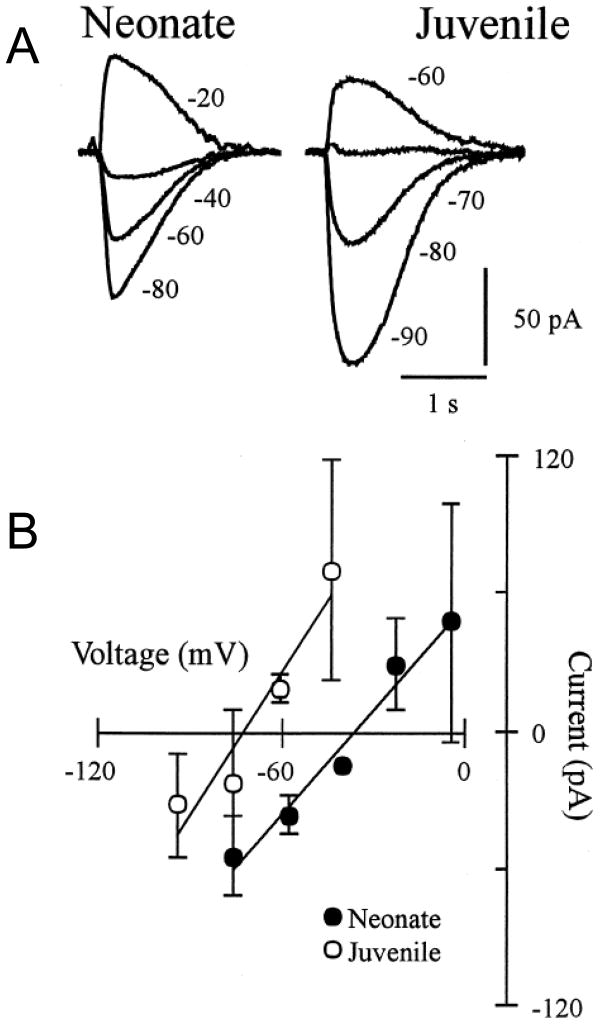Fig. 4.
The reversal potential of glycine-receptor-mediated currents recorded in HMs becomes more hyperpolarized with postnatal development. (A) Local glycine application onto a voltage-clamped HM shows the reversal potential from a neonate (P2) and a juvenile (P15) rat. Various holding potentials indicated in mV. (B) Neonate and juvenile group data for the current-voltage relationship of the glycine-evoked responses. Results show the hyperpolarizing shift in the glycine-evoked response with postnatal development. All recordings were done using the gramicidin perforated-patch technique so as not to disturb the native intracellular chloride concentration. (Adapted from Singer et al., 1998).

